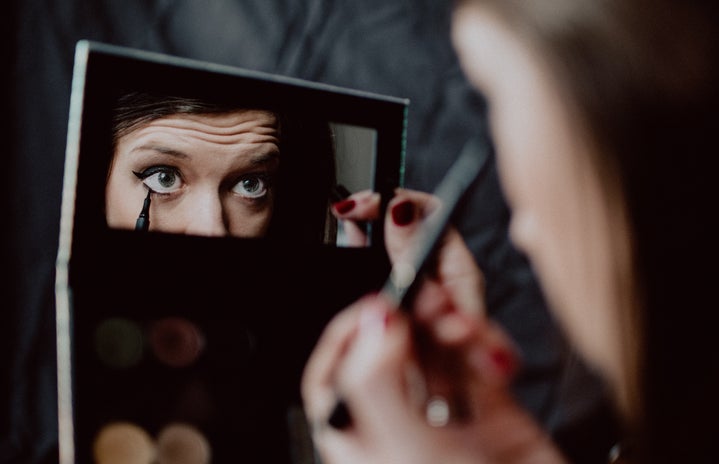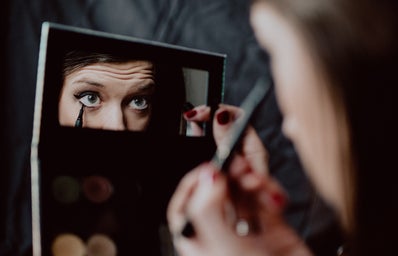Makeup and beautification are not just an accessory, they have been used as tools of resistance throughout history. Eyeliner takes on three major roles: self-care, self-preservation and protection. Just through the simple thickness of lines and angles of the wings, eyeliner has become a simple yet intricate way to express identities and ideas. Eyeliner has become almost this universal language despite its many differing uses and names, such as kohl, kurma, kajal and ithmid.
Zahra Hankir’s book, “Eyeliner: A Cultural History,” speaks about the evolution and significance of eyeliner, and what that means globally in 2023. The book delves into the global history of eyeliner and explores the relationship between make-up and cultural identity.
Hankir examines specific communities where the use of eyeliner is used as a tool of resistance, and not just an accessory. In the Mexican American-Chola community, eyeliner has become a form of “aesthetic resistance,” where it expresses one’s pride in identity and heritage. It is also a political statement, as it has been used to reject the pressure to assimilate into white American culture, making it almost a weapon.
Another community Hankir examined was the women in Iran. In Iran, women’s bodies are policed and covered, yet they have still found creative ways to self-express, particularly through eyeliner. These women are incredibly creative and resourceful when it comes to self-expression, no matter what the restrictions placed upon them are. Considering they don’t have the same accessibility and flexibility to experiment in the same way women in different parts of the world do, this is a powerful act of resistance.
Even during the COVID-19 pandemic, there was a boost in eyeliner sales due to face masks concealing most of the face, making the eyes further emphasized. People found new ways to use eyeliner to express creativity.
Hankir dedicated an entire chapter to Amy Winehouse because of how her distinct eyeliner aesthetic expressed her identity to the world as an artist and individual. Winehouse was often scrutinized for how she presented herself through her eyeliner, yet she could become more notable and stronger when she didn’t wear eyeliner, such as her final public performance in Serbia, where she showed up barefaced.
Similar phenomena are observed with other performers, including geisha in Japan, drag makeup culture and Bharatanayam dancers in India. Women prisoners, who lack access to retail eyeliner, make their own using pencil graphite and Vaseline.
When applying eyeliner, there are numerous options to consider, including different angles, colors, thicknesses and lengths. You can choose to wear it sultry, rebellious, loud, lowkey or clean-cut. The application rules are many and thorough. If you apply too thick of a line onto the lids, you take the risk to shrink the eye. If you apply lines that bleed, you might end up resembling a raccoon. Different eye shapes suit different styles of eyeliner. Even with how many years I’ve practiced putting on eyeliner, I am constantly experimenting.
Eyeliner holds this unmatched power that other items in your makeup bag can’t compare to, as liner has the ability to showcase your personality by its sheer application, and sometimes by choosing not to wear it. The choices are endless and they are deeply rooted within so many communities.
As Hankir stated, “The liner itself is, ultimately, an accessory to a far bigger story, one that encompasses human ambition and creativity, innovation, and versatility. To wear eyeliner and to learn about its origins is to bring not only ourselves, but also some of the world’s most fascinating cultures, into focus.”


